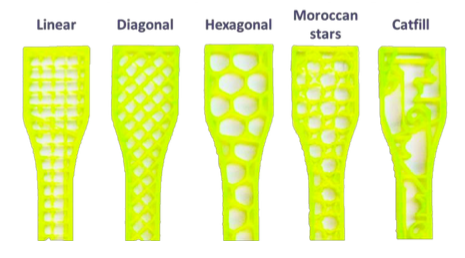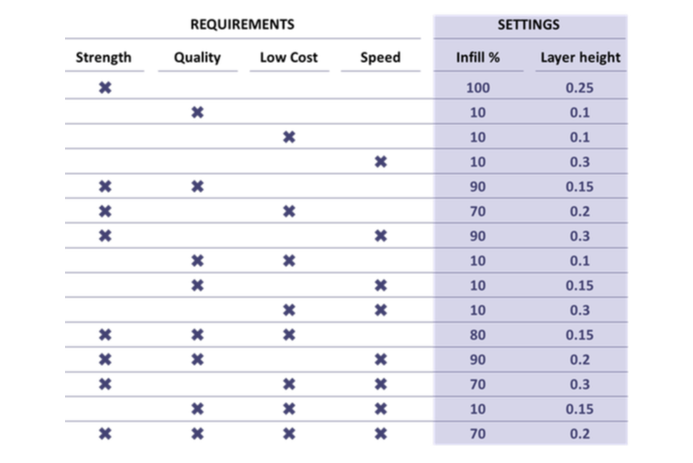Anyone involved with 3D printing knows that it becomes quite an easy process, unless you need the printed part to have some very specific properties and qualities. When it comes combining and optimizing mechanical strength, speed, and costs not all 3D printing is created equal.
While this is well known at the higher industrial level of additive manufacturing, it is now becoming more apparent even at a desktop filament fabrication level and, thus, more start ups such as 3D Matter (which previously tested filament from various suppliers) have been working on developing tests to make it easier for users to get the components they want for their projects.
3D Matter just published a study in partnership with ParisTech Arts Et Metiers, focusing primarily on how – using a MakerBot Replicator printing with PLA at 60 mm/s – variables such as infill percentage, layer height, and infill geometry affect properties such as strength, quality, cost and speed, in order to optimize the result according to the user’s specific needs. The final conclusions of the study are posted in the chart you see a couple of lines down; however, the entire process that led to these conclusions has also been described in detail and you can consult it here.
Not all conclusions are as linear and obvious as you might think. For example, while it is true that strength (Max stress i MPa’s) increases with infill percentage, it does not do so linearly. In other words, reducing the infill from 100% reduces resistance less and less, which means that you might be able to find a more optimized solution with acceptable strength at less than 100% infill.
One other interesting result is that the shape of the infill clearly matters, but linear, diagonal and hexagonal patterns are all fairly comparable in terms of strength, with linear being roughly 10% stronger than the other two. Furthermore, hexagonal infills start to look very similar to linear past 30% infill. Moroccan stars and Catfill showed poorer performance in terms of strength and are to be considered primarily for aesthetic value in exposed infills.

While the tests conducted only covered a small range of the possible materials and machines used today in desktop 3D printing, it does offer a great starting point for anyone intending to start using their personal 3D printing as a professional tool. Making sure that 3D prints come out just like they should is a great way to accelerate 3D printing adoption.



